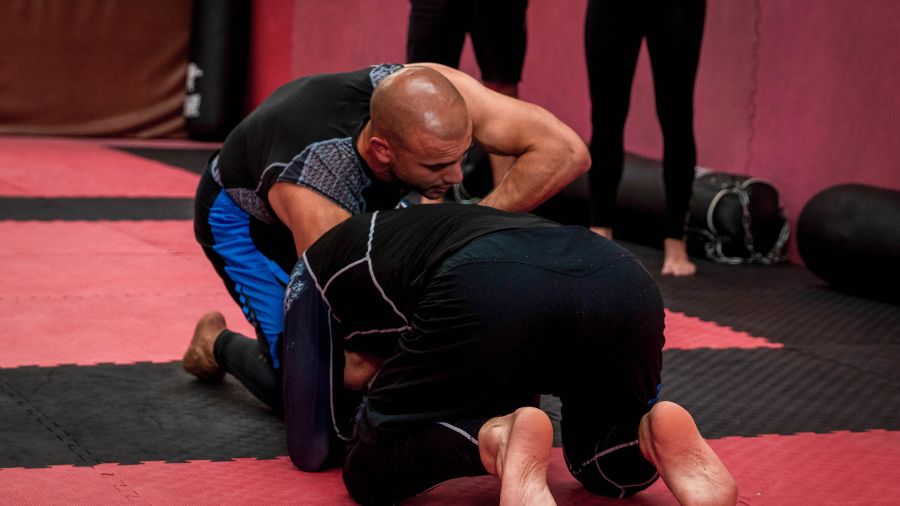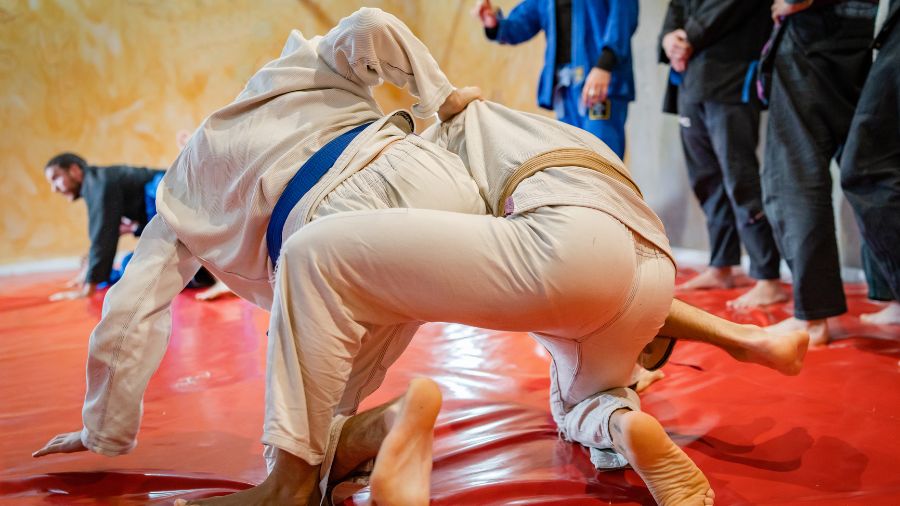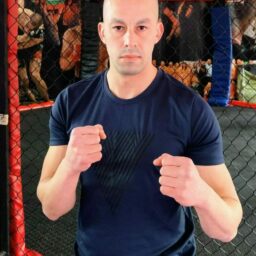Gi vs. no-gi grappling for MMA is a very opinionated topic. With successful fighters and coaches on both sides of the argument, it may be hard to decide how to train for the best results.
Training in no-gi provides a better functional and physical representation of an MMA fight. Since there is no gi to use, the pace and feel are more comparable, making it more practical for MMA.
There is no doubt that both styles of BJJ have immense benefits for grappling, but should you train in a gi for MMA?
Should You Train In The Gi For MMA?
Grappling for MMA is a very different beast than pure grappling. Many scenarios, positions, and moves are considered favorable in BJJ. But it can be terrible when there is a possibility of a punch or elbow smashing you in the face.
This is why it’s essential to choose which techniques to learn and whether you should train with a gi or stick strictly to no-gi grappling.
In my opinion, no-gi BJJ is better for MMA fighters, and there are many reasons why this is true. But traditional BJJ gi training also has a lot to offer, as has been proven countless times by world-class grapplers dominating the cage.
The best option to be better at grappling is to go with a hybrid training style and pick up the best of both worlds. Let’s see the main points for and against gi training specifically for MMA, starting with why you shouldn’t bother training in one.
Negatives Of Training Gi For MMA

There Is No Gi In MMA
The most obvious reason to spend your rolling time on the mats strictly doing no-gi is that there is no clothing in MMA. The kimono, as the gi is called in Japanese, in BJJ, can be used for control and submissions.

How to Dominate Every Fight with Raw, Explosive Power No One Can Match
Discover the underground blueprint that has quietly turned MMA hopefuls into legends, using nothing but sheer, brute force and bulletproof conditioning techniques.
In fact, a lot of time is spent learning sleeve and lapel grips and choke holds, which you cannot execute in an MMA match. You certainly get better at fighting when grappling in a gi, but why not spend the same time practicing in attire similar to what you would wear on fight night?
There Is Much To Learn For MMA
MMA is an incredibly complex combat sport. You must be able to punch and kick, take someone to the ground and prevent it from happening to you, use the cage to your advantage, defend and apply submissions, and so on.
And this is even before we consider the physical shape required to do all of those things well. This is why your training time is much better spent learning something you can use in MMA, like how to defend ground and pound, rather than lapel chokes and sleeve grips, for example.
The Pace Is Very Different
Another critical difference between gi and no gi BJJ is the pace. The grips in a gi significantly slow down the speed of the action, whereas no-gi grappling is much faster and frantically paced, just like an MMA match is.
Training in a gi involves many more methodical movements, which is not ideal for simulating an MMA match. Training in a rash guard better represents how an MMA fight feels and will whip you into MMA conditioning shape.
Physical Attributes Play A Lesser Role
Strength, speed, endurance, and explosiveness play a significant role in MMA, as they do in no-gi. On the contrary, traditional BJJ relies more on technique, and physical attributes play a lesser role. Training in a rash guard will improve them faster than training in a gi.
Now let’s see how training in a gi benefits MMA fighters.
Benefits Of Training Gi For MMA

Solid Fundamentals
There are no shortcuts in BJJ, and you cannot use strength to get out of situations (within a reasonable weight difference between the opponents). Training in the traditional BJJ curriculum will provide you with a solid foundation of fundamental grappling knowledge and skills that will serve you well even in the octagon.
Better technical skills are also helpful if the opponent has a size and strength advantage. After all, BJJ was designed to allow smaller people to control and dominate larger opponents. This principle applies even when not wearing a gi, albeit to a lesser extent.
Confidence
The fact that much of the fight game is mental has been overstated to death, but only because it is true. Earning a higher-ranked belt and going up against high-level brown and black belts will inevitably instill confidence in you that is hard to replicate otherwise.
Having a BJJ black belt may not always mean that much in an MMA fight, but it will always give you confidence and strike fear in the opponents.
Better Defensive Game
With a gi on, you must develop a better defensive game to escape and reverse positions. A wrist grab, for example, can easily be slipped off from or powered through with no-gi, but with a sleeve grip applied, you must be more technical to escape.
This knowledge may be the difference between winning and losing when you are gassed out in the cage or against an experienced grappler.
Gi or No-Gi For MMA
Given that MMA is “responsible” for creating no-gi BJJ in the first place, it’s expected that most MMA fighters spend the majority of their time on the mats without the traditional uniform.
We’ve weighed in on the different aspects of both gi and no-gi BJJ training in relation to MMA, and while it’s true that it’s best to train both, there is one more thing to consider, the age you are starting.
Things look very different for a 12-year-old just getting into the gym for the first time and a 28-year-old kickboxer transitioning into MMA.
If you begin martial arts as a kid with the goal of competing in the UFC, you will have a lot of time and energy to devote to training. In this case, gi training and going through the entire BJJ hierarchy will undoubtedly be extremely beneficial.
However, for an older fighter, particularly one transitioning from a striking sport to MMA with limited grappling skills, it is far better to focus solely on no-gi to develop the necessary defensive skills.
Previously, all fighters were required to train BJJ in a gi. Many great and accomplished MMA fighters, including Charles Oliveira, the Diaz brothers, and Fabricio Werdum, came from a gi background and will swear that a significant portion of their success is due to that.
But more and more MMA fighters today choose strict no-gi training for MMA. The rise of academies like 10th Planet BJJ and John Danaher has opened new horizons for no-gi BJJ. It proves that you don’t need to train in a gi in many cases.
There is ultimately no one best solution, just like most training-related issues. Some athletes prove or disprove both viewpoints in the argument over gi vs. no-gi for MMA.
So the final choice is between you and your coaches. But in this coach’s opinion, if your goals are solely getting better in MMA, no-gi grappling is how you should spend your time grappling.

